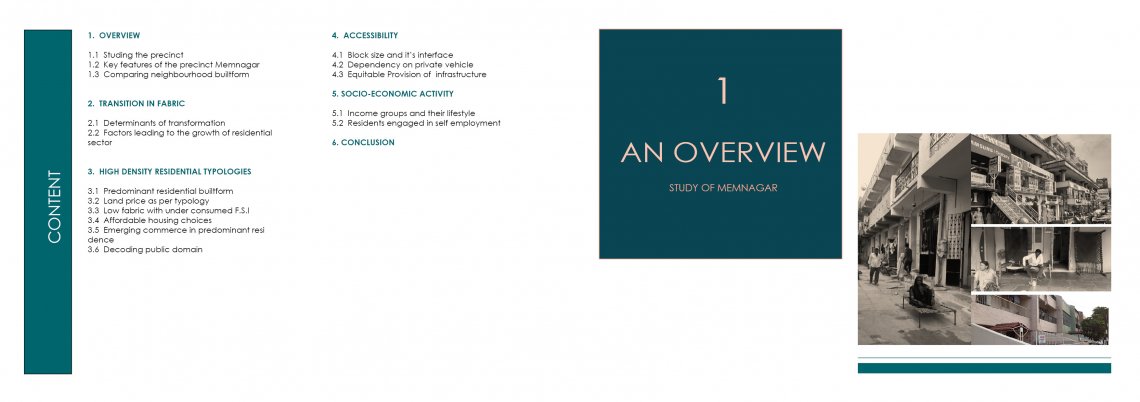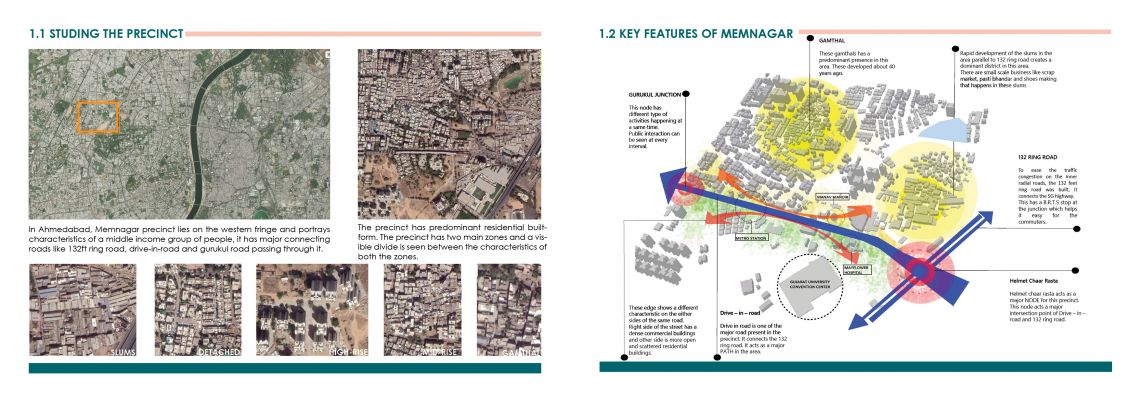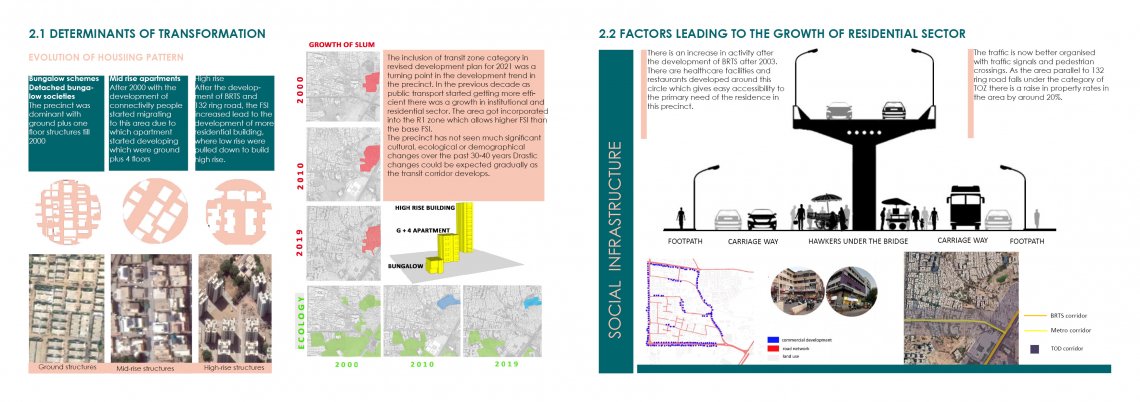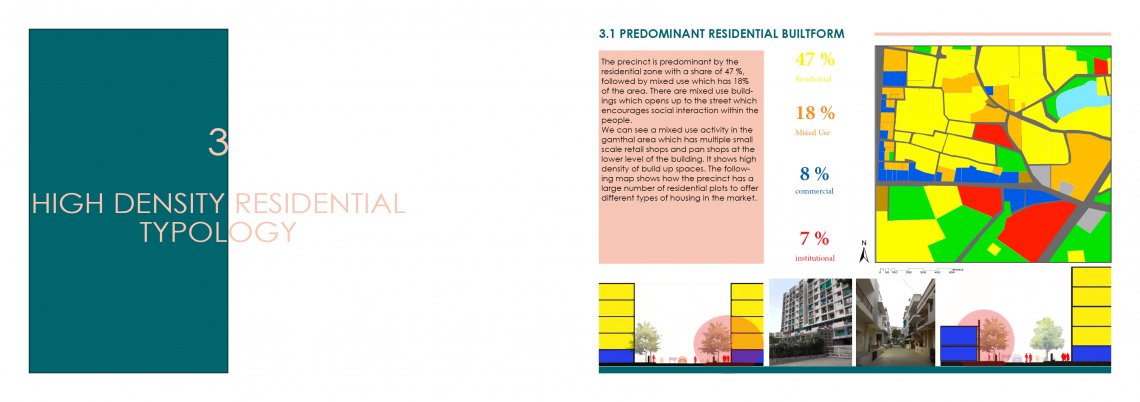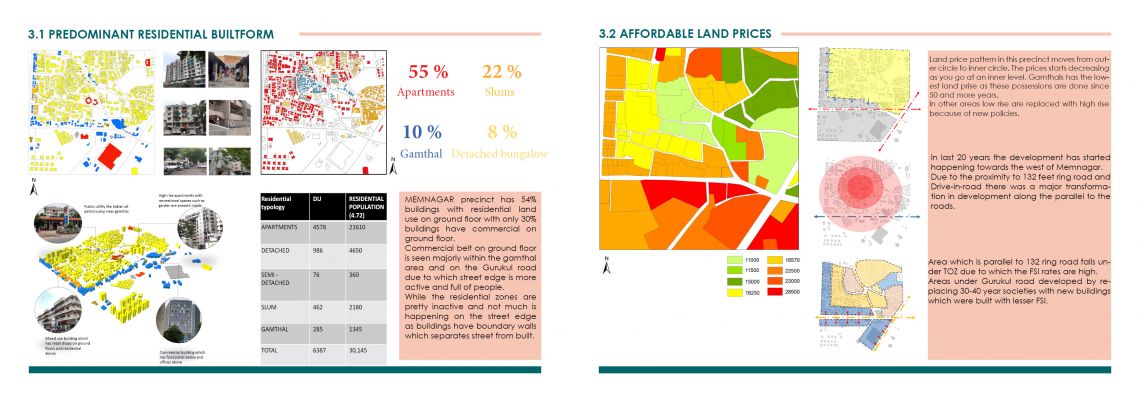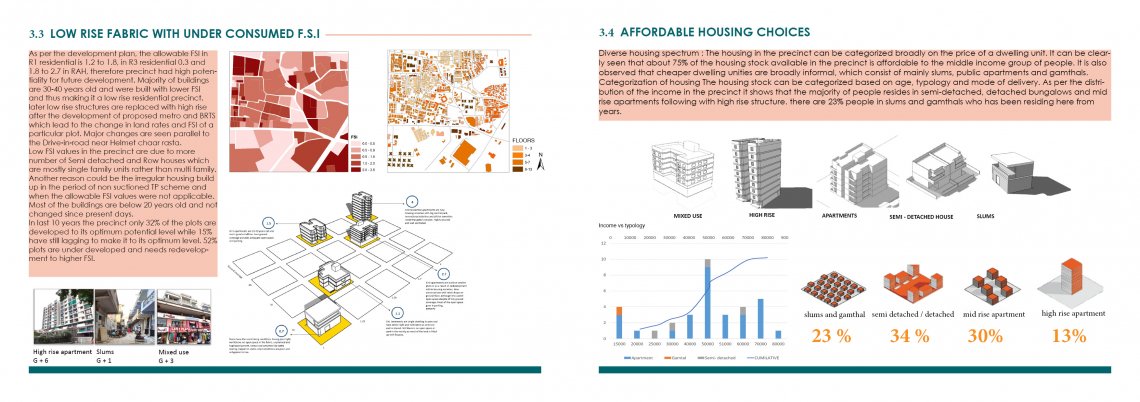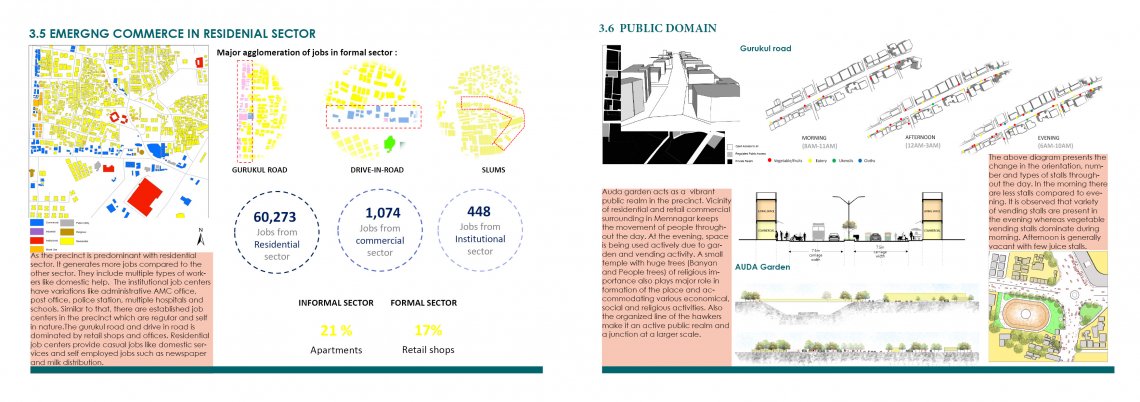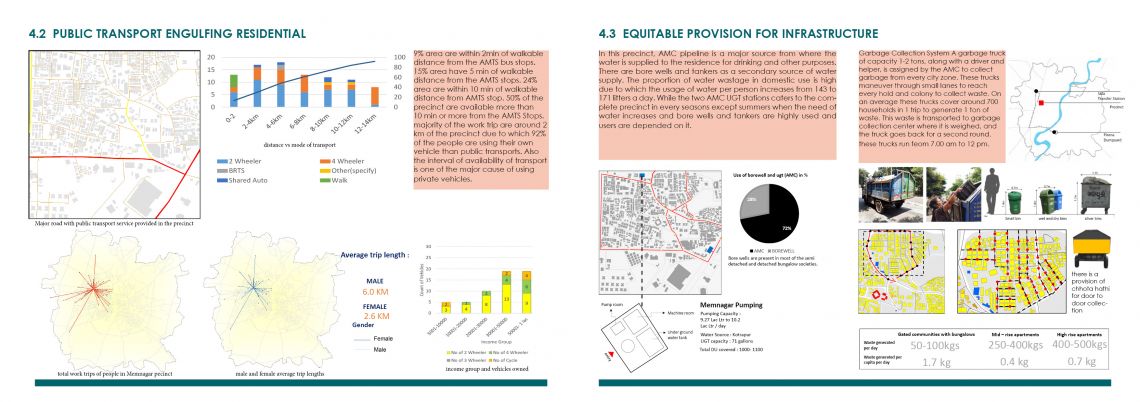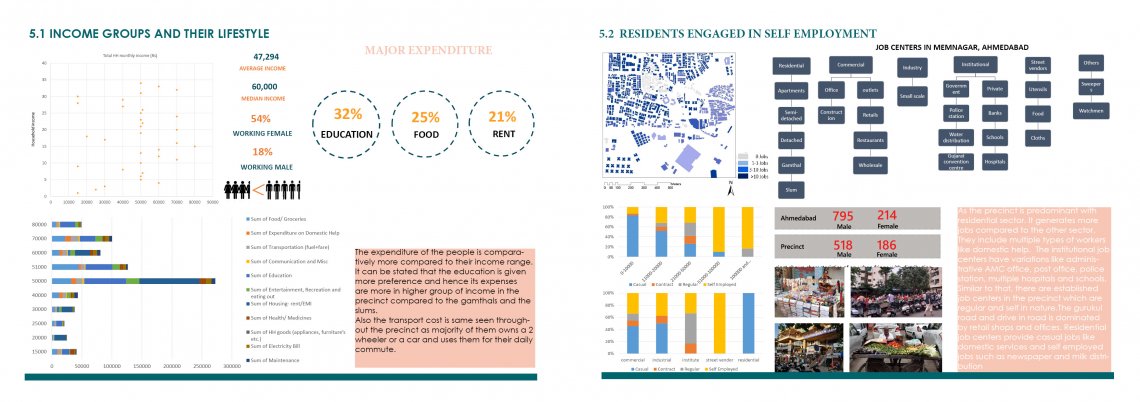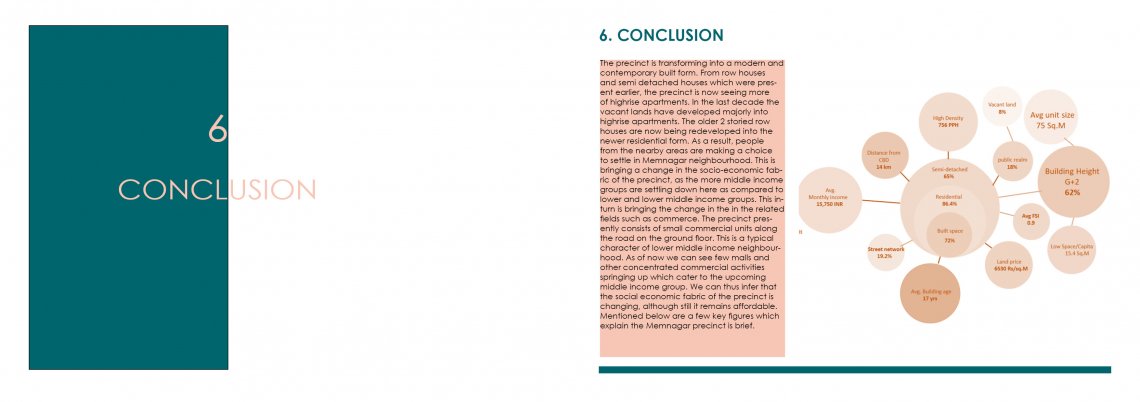Your browser is out-of-date!
For a richer surfing experience on our website, please update your browser. Update my browser now!
For a richer surfing experience on our website, please update your browser. Update my browser now!
This portfolio contains a detailed study of a square km precinct in Memnagar - A residential neighborhood in west Ahmedabad. This focuses on analyzing the complexity of urban fabric and identifying the characteristics and problems through the evidence based approach. The study was done through different Qualitative and quantitative methodologies such as, by engaging with the local communities through surveys, mapping, physical documentation etc. The study was done layer by layer on various parameters such as historical evolution and Transformation, physical characteristics, Socio-economic environment, Basic infrastructure. Ahmedabad emerged as an economic and industrial hub of India. It had witnessed large number of people migrating from the others parts of the country. The increase in pressure due to migration lead to the peri-urbanization on the fringe of Ahmedabad, in search of affordable housing and better living conditions. Memnagar has grown from agro-economy to urban economy. The precinct is undergoing transformation which can be evidently seen through last decade’s development and its changing urban form. From earlier bungalow houses to the newly constructed apartments, this change is reflecting in the socio-economic fabric of the neighborhood also. At present socio-economic growth of Memnagar is growing at a medium pace, where people are trying to improve their lifestyle by engaging themselves in commercial activities which are self employed. Considering the current situation of Memnagar where people are preferring to migrate, a huge demand of housing which are affordable by different income group of people will arise in the future.
